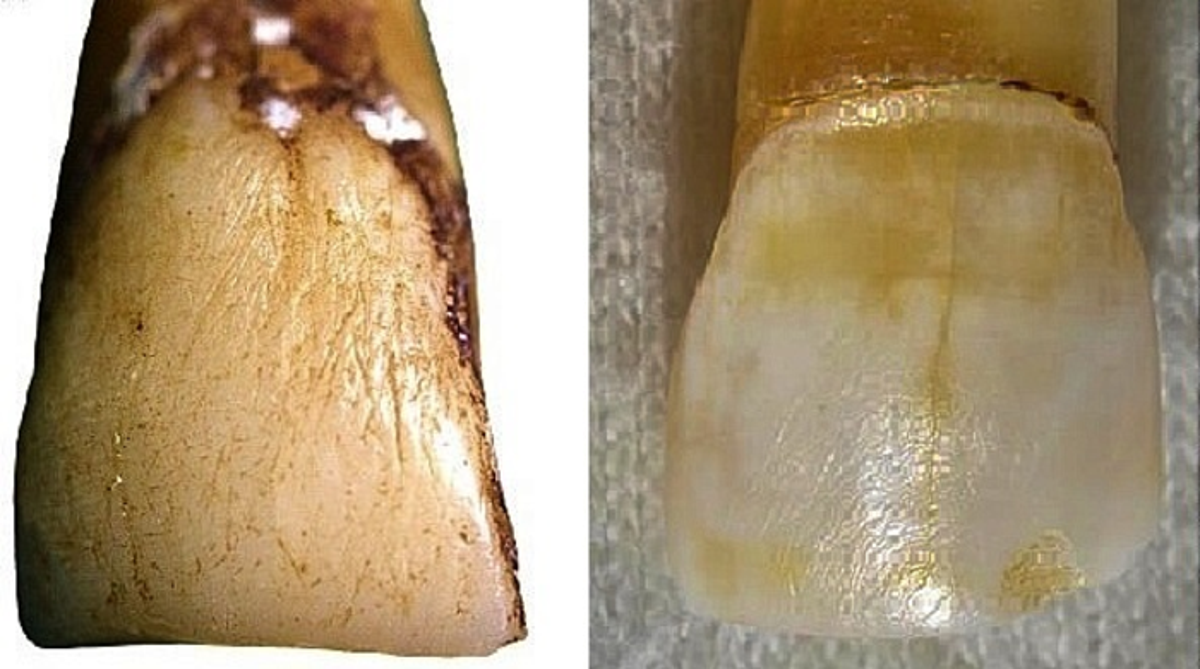The discovery of unusual markings on the teeth of wild Japanese macaques may have significant implications for our understanding of human evolution, according to a new study.
Up until now these signs of unusual wear had only ever been found on human teeth and were used as evidence for a culture of tool use in our ancestors, with experts arguing that they were formed by the way ancient people processed animal hide with the help of their teeth.
In previous research, archaeologists had found “toothpick” grooves in ancient human teeth, thought to be caused by tools being placed between back teeth to remove food debris or relieve pain.
But a new study, published last week in the journal American Journal of Biological Anthropology, found identical tooth wear in Japanese macaques that do not use tools.
In these monkeys, researchers now believe the “accidental ingestion of sand” and “oral processing of marine mollusks” may be causing these toothpick-like marks.
They believe the interpretation of similar wear in prehistoric human samples as indicative of tool-use “may need reconsidering”.
“Up until now, the large scratches in the front teeth of fossil humans have been considered to be caused by a behaviour called ‘stuff and cut’, in which an item such as an animal hide is held between the front teeth and a stone tool is used for slicing,” Ian Towle, study co-author from the University of Otago in New Zealand, said in a statement.
The new study found that the toothpick-like grooves on back teeth and large uniform scratches on the macaques’ front teeth were actually caused by eating shellfish from rocks and accidentally chewing grit and sand with their food.
Scientists say this macaque group is well-known for undertaking remarkable behaviours such as washing food in water and consuming fish, and have been studied for more than 70 years.
They say this species has not been seen using tools or other items that could cause the unusual tooth wear observed.
“Unusual wear on our fossil ancestors’ teeth is thought to be unique to humans and demonstrates specific types of tool use. These types of wear have also been considered some of the earliest evidence of cultural habits for our ancestors,” Dr Towle said.
“However, our research suggests this idea may need reconsidering since we describe identical tooth wear in a group of wild monkeys that do not use tools,” he added.
Researchers say the findings raise important questions for the understanding of cultural changes during human evolution and suggests the need for reassessing early evidence of cultural habits.
“We are so used to trying to prove that humans are unique, that similarities with other primates are often neglected. Studying living primates today may offer crucial clues that have been overlooked in the past,” Dr Towle said.



More Stories
New vaccine may hold key to preventing Alzheimer’s, scientists say
Just 1% of pathogens released from Earth’s melting ice may wreak havoc
Europe weather: How heatwaves could forever change summer holidays abroad